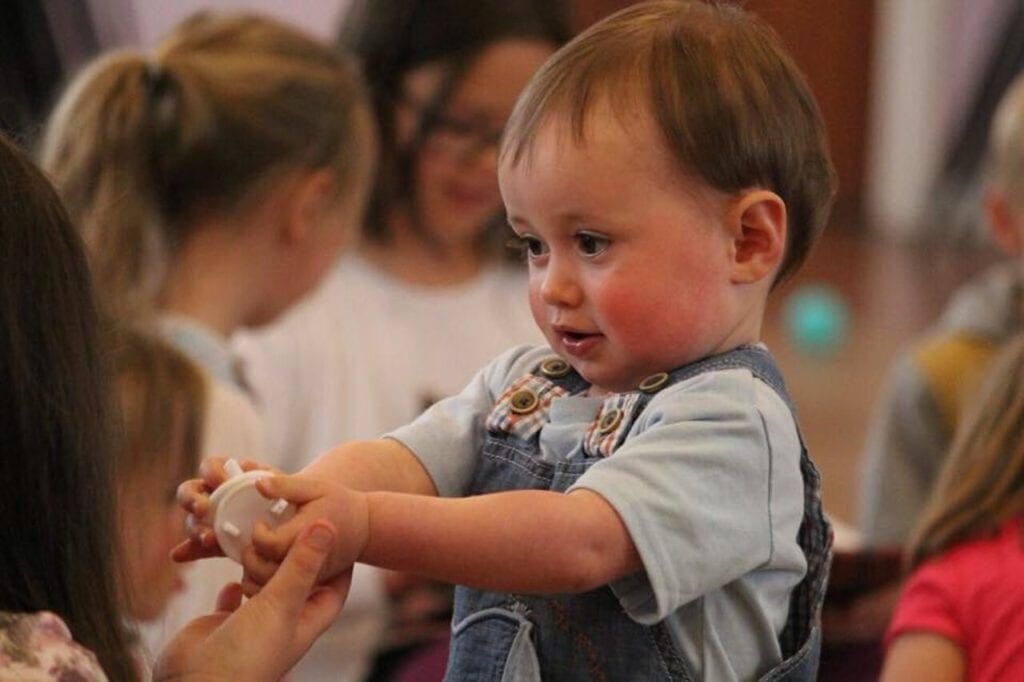Did you know YOU can have a marked impact on your baby’s language and development? As a devoted parent or care-giver, the choices that you make and the activities you share together with your child can go an extremely long way in terms of their cognitive, language and social development.
It’s easy to get started today
The first five years are of vital importance when it comes to forming neural connections in your child’s brain. These can have a lasting, important impact as they grow.
But the question is, as parents, how do we make the most of this important time? The First 5 Forever program can help!
The Importance of Stories
There is so much about the sharing of stories that is of the utmost importance when it comes to the development of our children. The very act of sharing time together, engrossed in books or talking about the illustrations and characters, can promote language development in your child and also help them to develop a lifelong love of learning.
Engaging in story telling and sharing can not only provide an excellent outlet for information, but it can help develop synapses and forge new connections within even the tiniest of minds.
Look Who’s Talking
As with engaging in books and story-telling, simple conversation can go a long way towards promoting baby and child development. Narrating your day, as simple as it sounds, provides your child with the opportunity to listen to language in context which will, in turn, be able to help them with their own vocabularies and language development. Singing, chatting, asking questions and posing solutions can work together as a specialised team when it comes to language and learning in the home.
Remember to pause and let them enter the conversation in whatever way they can. Your response lets them know their contribution is valued and interesting, and encourages them to keep practicing their language with you!
Got a baby in the house? Respond to them when they ‘talk’ to you. This is the start of your language development journey. Treat their babbles and coos as conversation and take your cues from what they are doing to engage with them on a social and emotional level. After all, they’re learning from you and small children are sponges for knowledge. The more talk, the better!
How Can I Use Language To Promote Development?
Not sure where to start? Here are a few ideas.
Experiment with new words
Vary your vocabulary to introduce your child to new words. For example, instead of saying ‘hungry’ you could say ‘famished’, and then explain what the word means. Even the simplest changes can get tiny minds a-twinklin’ with new ideas and new connections. Mixing up the way that we talk to our children can have untold positive ramifications for their own understanding of the way that words work together.
Singing Songs
The State Library of Queensland’s First 5 Forever program engages in singing as a crucial part of helping children develop language and communication skills. Nursery rhymes have been around for millennia for good reason – they slow language down and help with the retention of words and phrases. Repeating songs and making them part of your daily routine is an excellent way to tap into this age-old knowledge and make it a vital part of your interactions with your child.
Repetition, rhythm and rhyme make singing enjoyable and interesting for young children. These don’t necessarily have to be nursery rhymes (although they are a good place to start) – you could sing popular songs, songs you loved as a child or even make up your own tune. Something in a traditional language or dialect would also be a fantastic idea for a song to sing to your little one.
Encourage your child to sing along with you and act out any movements you can come up with. Wheels on the Bus comes to mind as does Twinkle Twinkle Little Star or Incy Wincy. Classic songs that have hand motions and interactivity are a great choice for a song to share with your baby or child, as your baby can choose the song they want to share by showing you the actions before they can even speak the words.
Making Books a Part of the Furniture
We’re not promoting hoarding by any means, but the one thing that we would stockpile forever is BOOKS. Books, books and more books! Let your children touch and feel these treasure troves of knowledge and fun. Have books on hand for story time, bed time, bath time and play time. Have them in the car or the pram. Let kids read (or look at pictures) while you’re out doing the shopping or while you’re having a picnic in the park. Exposing children to as many books of varying difficulty and context as possible is an incredible way to tap into their developmental opportunities and help to encourage and nurture a lifelong love of learning.
Share stories with your child in a way that both of you can see the book. Point to pictures, talk about the pictures and ask questions. The great thing about reading is that there are no hard or fast rules – it can be an adventure you undertake together.
Strategies by Age Group
Language development can take on a variety of forms. Here are a number of tools you can implement separated by age group.
Newborn to Six Months Old
It’s never too early to share stories! Feeding and change time also provide opportunities to get some real development happening. Facial expressions and movements can be copied by baby! This is an early form of communication wherein the child is responsive to your movements and sounds – it’s their very first way of having a conversation.
Play interactive games like Peek-a-Boo and Round and Round the Garden to promote giggles and to also help language and development retention.
Engage in sensory play wherever possible. Fabric books with interactive flaps and textures can be a great opportunity to promote sensory development.
Six Months to 12 Months
Follow your child’s lead! What appeals to them? How can you promote those experiences in your daily routine?
Nursery rhymes are key here. Engage in these songs at a nice, slow pace that your baby will be able to follow.
Story time provides a bonding experience and a great first leap into the wonderful world of words.
Get started today!
You don’t need any special equipment or new toys. Just visit First 5 Forever for lots of fun and free activities and ideas to try at home. You can also sign up for free weekly tips customised to suit the age of your child.



